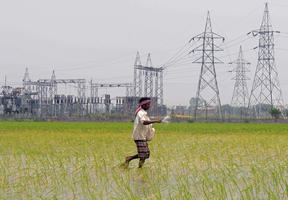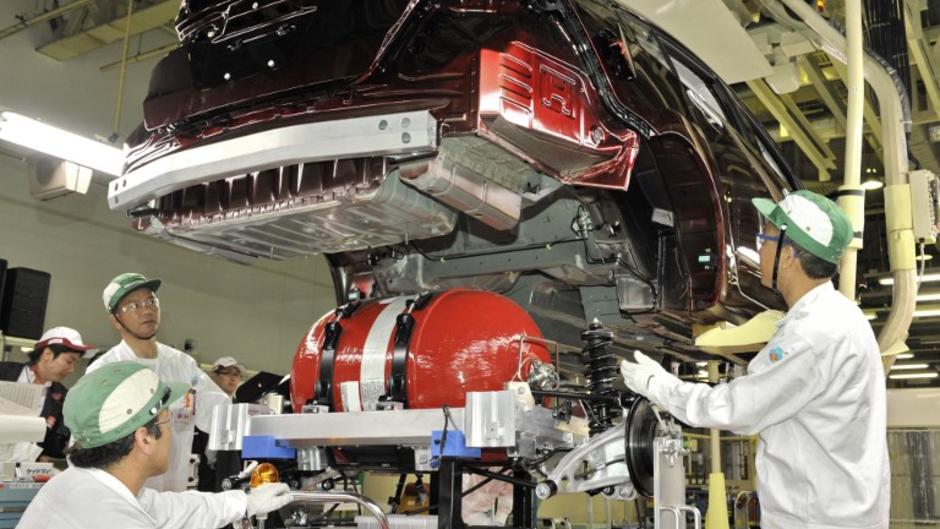
1. The rise of the hydrogen car
Experts in Japan started researching the use of as an as early as 1973. Hydrogen cell cars are merely one application with high symbolic value in a country whose automotive industry has always been at the leading edge of technology. The Toyota Mirai (Japanese for "future") was released in 2015, followed by the Honda Clarity in 2016. In this photo, technicians can be seen attaching the large hydrogen tank to the chassis of the Clarity at Honda's Takanezawa plant.

2. Hydrogen transportation and retail
The hydrogen used to vehicles is compressed at 700 bar, requiring compliance with strict rules at the 80 or so fueling stations in Tokyo and Osaka, such as the one shown here. Japan's experts are already exploring other ways to transport and store the fuel, including in liquid hydrogen form, at very low temperatures or associated with other chemical molecules, such as in ammonia. They are also looking into using hydrogen to generate in thermal power plants.
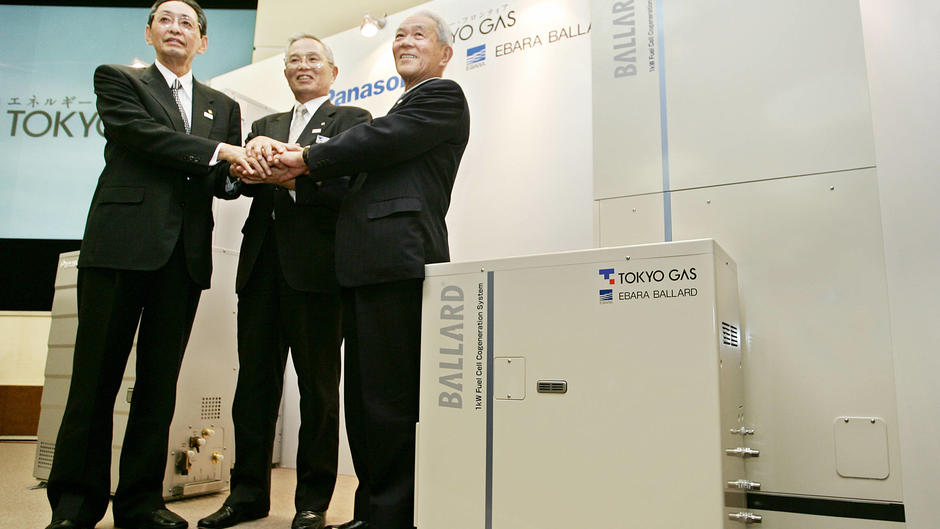
3. Residential hydrogen use
For several years now, fuel cells have also been used in stationary form in many houses, offices and public buildings. A unit around the same size as most major domestic appliances produces hydrogen directly from the municipal gas supply, then the hydrogen generates electricity and . This photo, taken at the sales launch of a new stationary fuel cell unit, shows just how little room the systems require.

4. Portable applications
Hydrogen can be used as an energy carrier in extremely small devices, such as the external cell phone battery developed by Japanese manufacturer Rohm, pictured here. When the hydrogen in the battery comes into contact with the oxygen in the air, it transforms into water, which evaporates, and electricity. A similar process is used in electric bicycles and scooters.

5. The impact of the Fukushima disaster
Japan's determination to develop innovative energy forms stems from its lack of natural resources. However, its resolve was strengthened by the March 2011 Fukushima disaster, which led the country to switch off its nuclear power plants and try to strike a new balance in its . Today, more than 85% of Japan's power is generated from fossil fuels. This photo shows the Fukushima Daiichi plant, which is still being dismantled. It was taken in February 2016 from the Rainbow Warrior III, a Greenpeace ship used to collect seawater samples.

6. Heavy reliance on hydrocarbons
After Japan switched off its nuclear power plants in the wake of the Fukushima disaster, it was forced to increase imports of and natural gas. The country is the third-largest consumer of oil after the United States and China. Relying on the Middle East for more than 80% of its oil, it is currently seeking to diversify its supply sources. Shown here is a crude oil refinery in Shizuoka, with the famed Mount Fuji looming in the background. The area was hard hit by the March 2011 earthquake, which severely impacted the refining and petrochemicals industry.

7. An LNG pioneer
Japan is by far the world's largest importer of , accounting for more than a third of the global market. It began investing in LNG in 1969 and currently has 30 import terminals. Japan's largest suppliers are Qatar, Australia, Malaysia and Russia. The pipes in this photo are transporting liquefied natural gas directly from a docked (in the foreground) to the storage tanks (in the background). The LNG is then regasified and fed into the distribution network.

8. Nuclear revival
Japan had 54 reactors running before Fukushima, making it one of the world's largest civil nuclear powers. Since then, it has permanently shut down 12. However, Shinzo Abe's liberal government, which has been in power since late 2012, has vowed to restart the nuclear plants to reduce the share of imports in its trade balance. Three reactors were turned back on in March 2017. Seen in this photo are reactors 3 and 4 at the Takahama plant, which have been green-lighted for reopening.

9. Staunch popular opposition
No clear winner has emerged in the disagreement between supporters of restarting the nuclear plants and advocates for a swifter transition to renewable energies. A large proportion of the population is anti-nuclear and concerned about the consequences of the Fukushima disaster in terms of soil and water contamination and the creation of "no-go zones". Each request to restart a plant is challenged in the courts. Seen here is a rally in front of the Osaka High Court in late March 2017 to protest against the reopening of the Takahama reactors.

10. Offshore wind power development
One of Japan's options is to significantly increase its use of renewable energies. While the island nation's geography offers few viable wind power sites, Japan has been highly active in research on the equivalent, where turbines are mounted on platforms. In 2013, a 2 megawatt prototype was installed some 20 kilometers from the Fukushima coast. The ruins of the nuclear power plant can even be glimpsed on the horizon in this photo.

11. Solar panels on every rooftop
An eager observer of all new energy trends, Japan dominated the solar photovoltaic (PV) market at the turn of the century. Today, it is still ranked number four, notably thanks to the vast number of PV systems installed on residential and commercial rooftops. However, development of solar power has been hampered by the lack of space and sunshine. This photo shows the rooftop of Saishunkan's Kumamoto offices covered in solar panels.
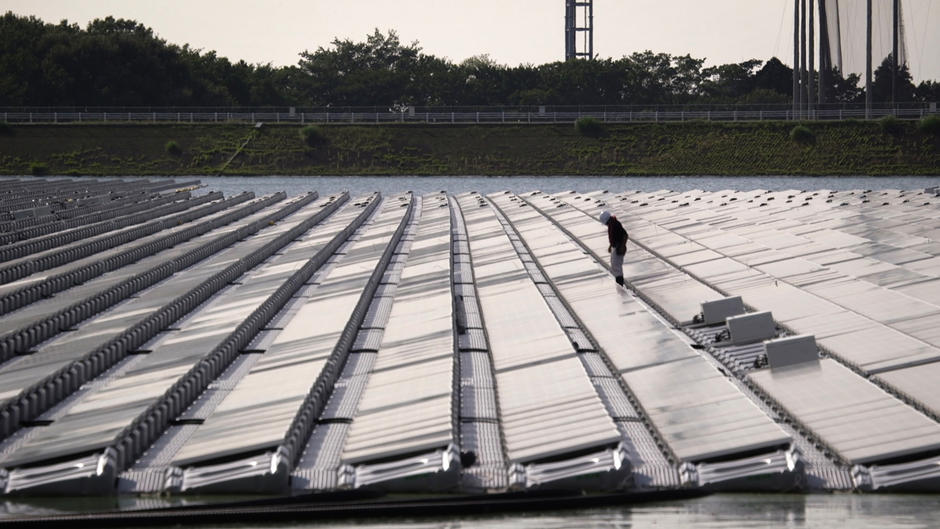
12. Floating solar farms
The little available land in Japan has prompted experts to install solar farms in every possible location, from disused golf courses to lakes and industrial ponds. This photo shows technicians installing floating panels on the Yamakura Dam reservoir near Ichihara. With a capacity of 13.7 megawatts, the floating solar power plant will be the world's largest in its category.

13. Geothermal potential
The fault system running under Japan means the country is plagued by often devastating earthquakes, yet it could prove beneficial by offering easier access to the Earth's heat, otherwise known as energy. The country's tens of thousands of hot springs attest to this underground activity. Japan began developing geothermal power generation in the 1970s, but has met with opposition on environmental grounds. This photo shows Japan's first geothermal power plant, Matsukawa, located in the country's north.

14. Mobility and urban-planning innovations
Japan is constantly integrating the latest innovations in housing, mobility and energy. Shown here is automotive giant Nissan's prototype for a "smart" home, featuring a Leaf electric vehicle recharging thanks to rooftop photovoltaic modules. The system can also run in reverse, redistributing the electricity from the car battery throughout the house if required. Japan places great importance on continuity of electricity supply due to its frequent earthquakes.
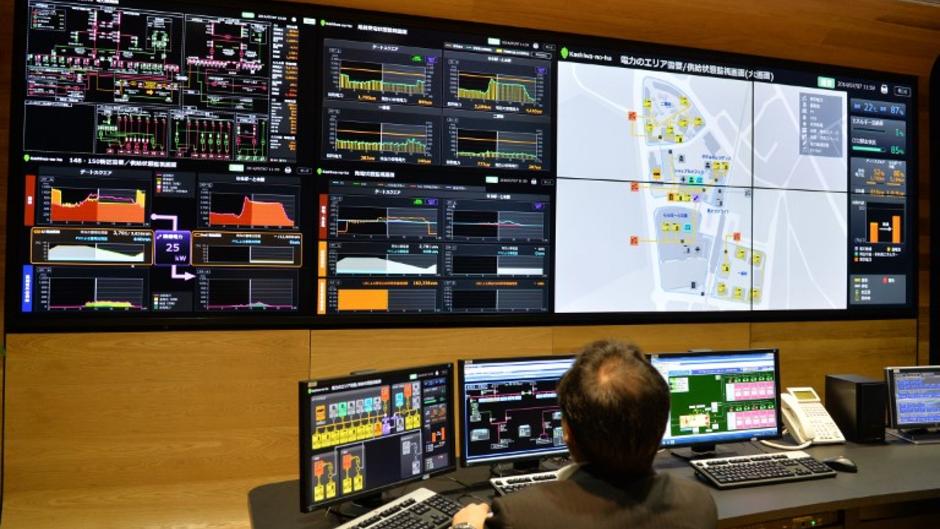
15. The emergence of "smart communities"
Japan's urban planners were among the first to develop the idea of "smart communities", drawing inspiration from the country's close-knit society. In this photo, a control room operator oversees energy management in the Tokyo suburb of Kashiwanoha. The residential buildings, large shopping mall, hotels and two universities in this "smart city" are all interconnected to ensure the right balance between the public power grid, distributed generation and electricity consumption.
 Geopolitics of energy
Geopolitics of energy
See all







